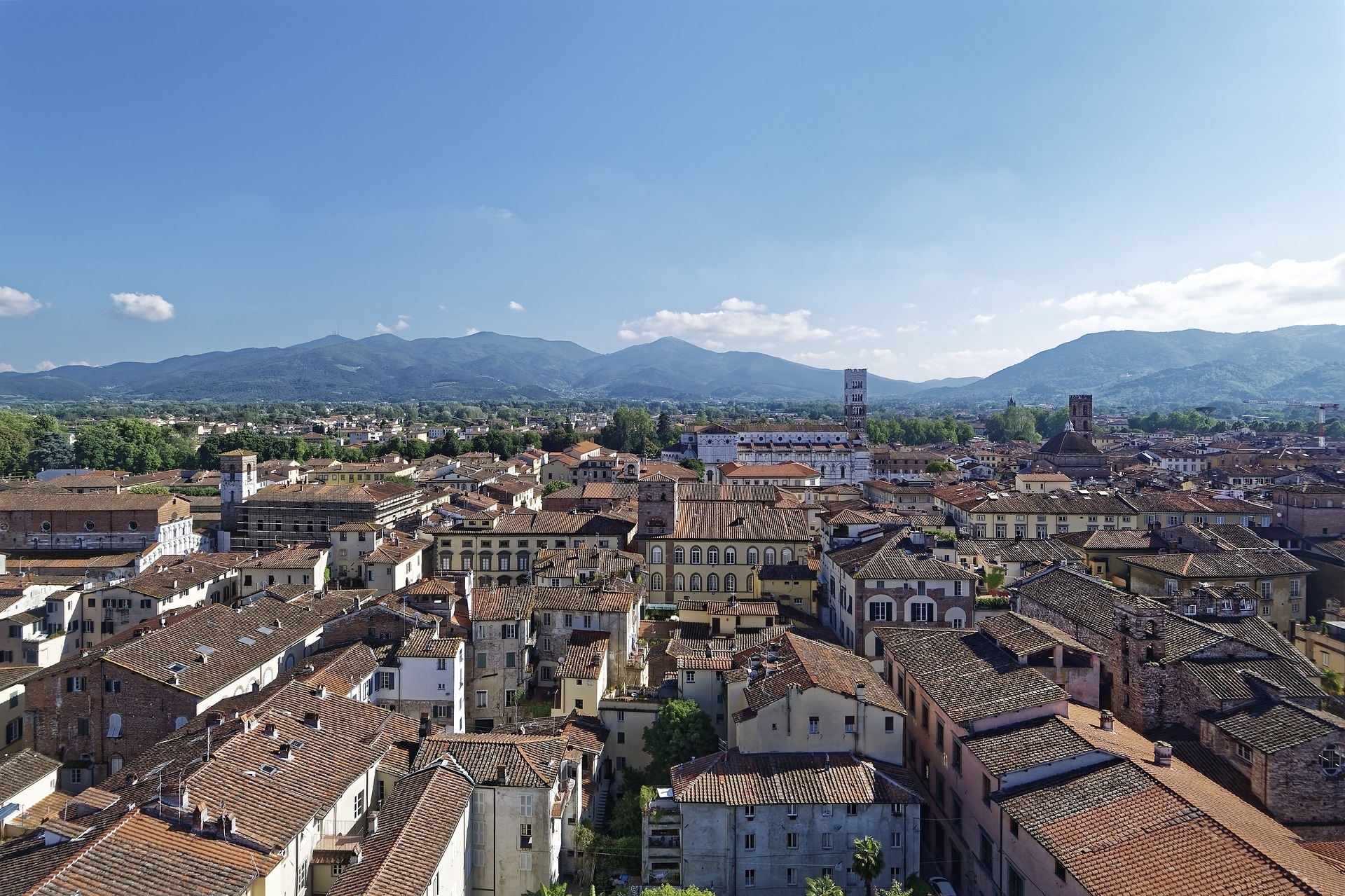
Villa Basilica is a tiny village in the hills above Lucca, Italy, pictured above. (Pixabay/680451)
This past weekend, my husband, Dan, and I attended Mass at St. James Cathedral in Seattle. Fr. Mike Ryan and his amazing team create a beautiful Mass experience in that grand structure.
When the notes of the monumental brass organ at one end combine with the soaring voices of the choir at the other, we folks in the middle are quite simply transported to a higher, lighter plane of worship and awe.
Most of the Mass is sung or chanted, often employing the Latin versions of the usual prayers. As I listened and mouthed along to the Kyrie and others, I felt myself smiling with both my face and my heart. These sounds resonate back to my childhood at morning Mass at St. Euphrasia Church, and beyond that, to my Nonna.
My Italian grandmother, Nonna Edith Faina Orr, was steadfast in attending her morning Latin Mass at Sacred Heart Church in Lancaster, California. The Latin resonated with her, especially after the mid-1960s Vatican II, when the priests turned around, faced us and spoke in English, even.
As a first-generation American, born in 1914 just three years after her parents arrived in Los Angeles from Villa Basilica, a tiny hilltop village above Lucca, Italy, Nonna would of course prefer hearing her daily Mass in Latin. It was as close to her parents' native language as she could get, and she had the advantage of understanding pretty much everything the priests were saying.
Nonna's relationship to her Latin heritage and the Italian language was complicated. Her parents, Sestilio and Assuema Faina, only managed to learn a smattering of English, so like so many American-born children of recent immigrants, Nonna became their translator and mediator. While she was thus bilingual all her life, and spoke Italian to her parents, aunts, uncles and cousins, she chose not to teach any of her 10 children how to speak it. She wanted them to be wholly American, to assimilate and thrive in this country where her parents had recreated their lives.
Advertisement
There was also the factor that in the first half of the 20th century — due to the World Wars' alliances and Cold War politics — Italy was associated with first Fascism and then Communism. From the 1940s through the 1960s, when her children were coming of age, she needed her family to be perceived as patriotic, not ethnic. They were Americans, through and through.
How lucky for me that after the 1970s, when I was growing up, that cultural stricture eased, and Nonna felt safer in embracing and exploring her roots, and sharing them with us, her grandchildren.
Her first trip back to Villa Basilica was not until 1985, when she was 71 years old. Her husband, my Grandpa Red, after many years of disability and disease, had died in December 1984. The full year it took her to recuperate from that trauma and grief seemed to reshape and release her to herself. She emerged with a new sassiness and determination to reclaim her origins. She returned to her village in Italy, and her family there, multiple times in the next 15 years. She died after a brief illness at age 86 in 2000.
During those years, Nonna not only shared stories from those adventures with me, but the letters in which she wrote about them were all in Italian, which made them come even more alive. In the early 1980s, when I was taking Italian classes at Loyola Marymount University in Los Angeles, she and I started corresponding once a week. Our one rule for these letters was no English allowed, and my conversational Italian vastly improved by reading and responding to her weekly notes. After she started her travels in 1985, those letters were full of colorful vignettes about life in Villa Basilica.
After her first visit there, she wrote that she was surprised to see that in the village, women her age still mostly wore the traditional garb. Even though it was nearing the end of the 20th century, older women still wore black skirts or pants, dark blue long-sleeved blouses and red aprons, with their hair held back and covered by bandannas.
Now, my Nonna was a modern and practical American lady. If you were also a child of the '60s and '70s, you will be able to easily picture her polyester double-knit matching outfits: the floral blouse with huge flowers — in hot pink, turquoise, lime green, crossing-guard orange — and the pants in the complimenting fluorescent color, with off-white vinyl-covered walking sandals, wide, comfortable and matching her vinyl purse. It was the classic American Grandma ensemble then, and it was and is fabulous, even now.

(Provided photo)
To the local ladies of Villa Basilica, those loud and comfy outfits might just as well have come straight out of the space age, and my Nonna was their walking, talking super model of the future. She was only too happy to share that they were easily obtainable via the Sears and J.C. Penney's catalogs.
And sure enough, when Nonna returned the following year, those catalogs had clearly been eagerly utilized. Women of a certain age now could be seen on the narrow, cobbled streets doing their daily shopping in snappy dayglo-colored pantsuits. Goodbye, peasant women. Ciao, trendsetters.
It may sound a bit odd that when I stood under the towering arched ceilings of St. James Cathedral, listening as the swelling harmony of the choir filled its vaults with glorious reverberations of the Latin Mass, what I suddenly and vividly pictured were those Italian ladies. Gathering to gossip in the sunny piazza in front of Villa Basilica's spired church, glorious in their bright flowered double-knit outfits, reveling in their newly found freedom from dark tradition.
I can only wish that I might influence a whole town simply by showing up, as my Nonna did. For most of her life, she strove to dissolve into the melting pot of America, to subdue her heritage for the sake of her family and future. But when it was finally time to just be herself, both Italian and American, she could not help but stand out, as inspiring and eye-catching as those glow-in-the-dark pantsuits.
[Amy Morris-Young graduated from and taught writing at Loyola Marymount University in Los Angeles.]
Editor's Note: This is the first installment of Amy Morris-Young's new column, Notes from Nonna. We can send you an email alert every time a new Notes from Nonna is posted to NCRonline.org. Sign up here.








